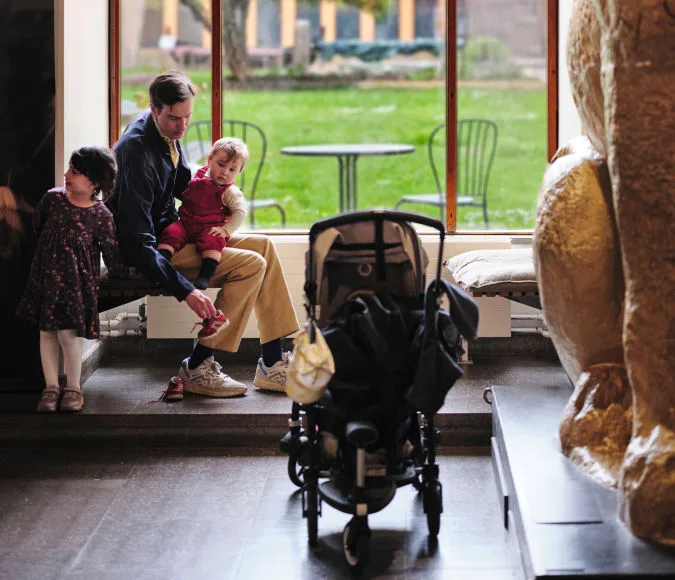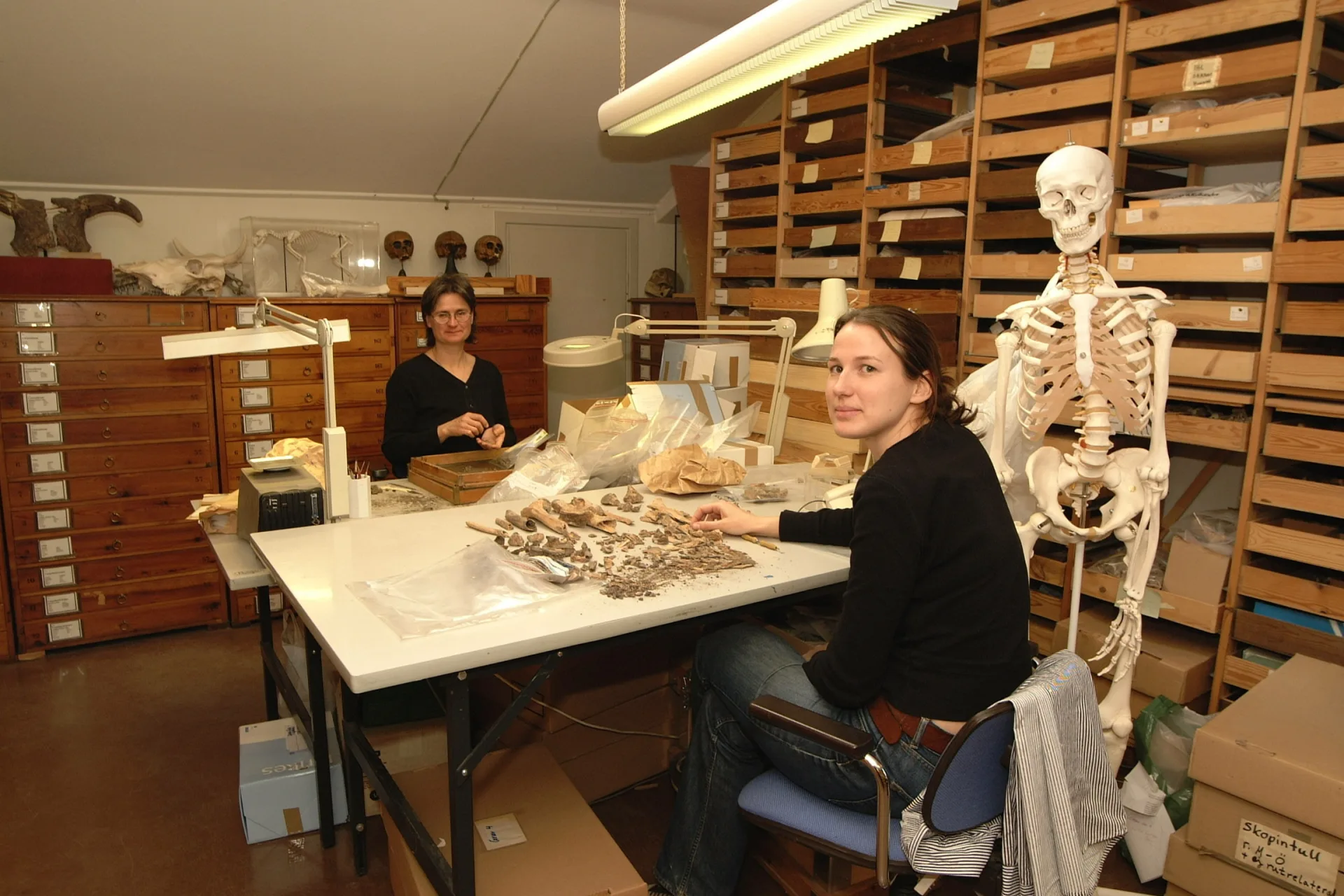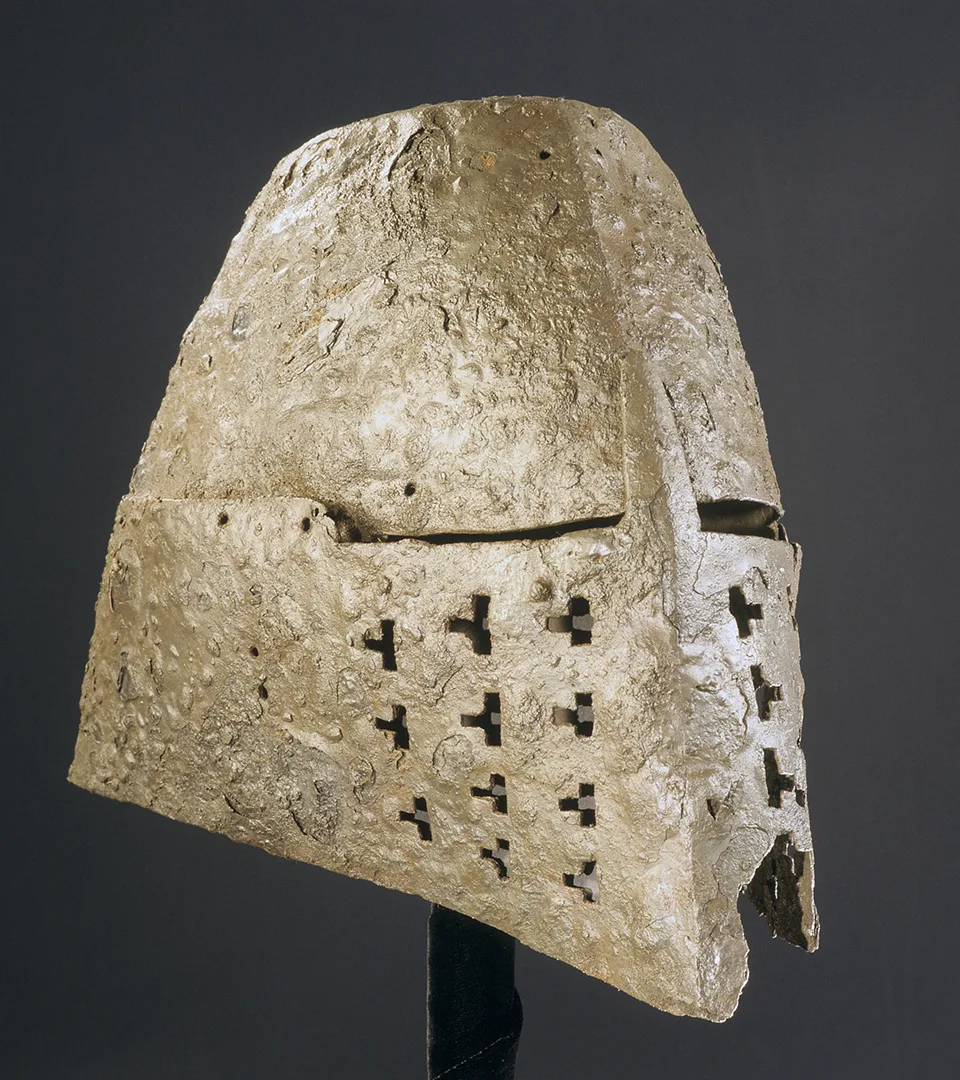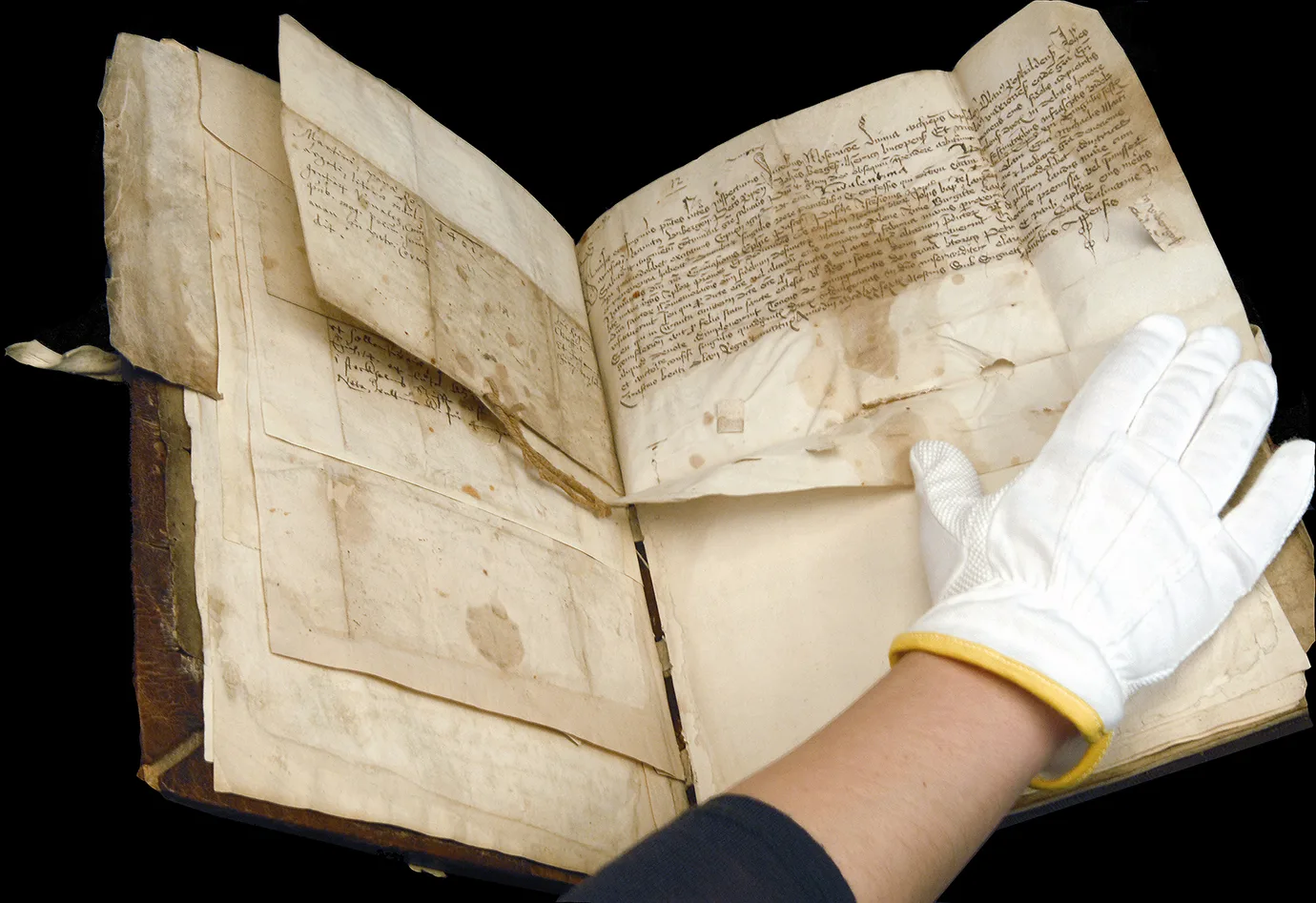
Medieval Massacre
Please note: the sensitive content in this exhibition may not be suitable for all.
In late July 1361, there was a brutal clash with Danish troops under King Valdemar Atterdag and 1,800 farmers on Gotland lost their lives. After gaining parts of Skåne and Öland, King Valdemar was intent on conquering Gotland. He landed on the island with a professional army and was preparing to march on Visby. Part way there, in the marshlands of Mästerby, the farmers tried, unsuccessfully, to halt his advance. In the exhibition, you can see bits of weapons, lost horse shoes and battered fragments of armour from the action.
The final battle was fought beneath the Visby town wall. Both children and old people among Gotland’s farming population had joined in the defence of their island. Visby was forced to surrender on 29th of July. King Valdemar was victorious, and more than half the farmers of Gotland had been killed in battle. Valdemar’s son Kristoffer served with the Danish army, and his reconstructed armour and accoutrements are pictured here.

Unique remains
After the battle, dead soldiers and their equipment were swiftly buried in large mass graves. When archaeologists excavated the site in the 1920s, they found that the remains of the dead, the armour and the weapons were extremely well-preserved, making them internationally unique.
Items on display include chain mail shirts (hauberks), coifs (headgear), chain mail gauntlets, maces, swords, crossbows and arrowheads. Together, the artefacts and human remains give us an insight into the nature of medieval warfare.

Gauntlet
On view at Historiska museet in the exhibition Massakern vid muren
In this exhibition you can follow three Gotlanders and two Danish soldiers and learn about their living conditions. When osteologists, experts on bones, have analysed the skeletons they were able to discern diseases, height, build and age. From injuries and bone incisions one can also reconstruct fighting techniques and identify the weapons used, just as in a modern crime scene investigation. The soldiers’ armour presents both modern and antiquated features for the time. The armour looks heavy to wear, but the mobility of the plates in relation to each other made it easy to move about in. In the exhibition you can also try on reconstructions of the soldiers’ gear.
One of the armours on display may have belonged to men named Bavo or Schelto Roorda. They were two brothers of a noble family in what we now call the Netherlands. We don’t know how they fared. The different bronze heraldic emblems on the armour represent different branches of the clan. A leather pouch containing a small fortune in coins was found together with another soldier who probably served in Valdemar’s army.

Cuirass
Emblems of the Roorda clan
On view at Historiska museet in the exhibition Massakern vid muren
The remains of a young, heavily built Gotlander, aged between 30 and 35 reveal that he was probably attacked from behind. He sustained several blows to the head from both axe and mace.
Historical perspective, recurrent phenomena
This exhibition gives us an opportunity to ponder war in a historical perspective of war as a recurrent, destructive phenomena. The strikingly well-preserved humain remains, photographs of mass graves, and the weapons on display here remind us of acts of cruelty occurring in the present.
What to know before your visit
- Admission: Free admission for children and youth aged 0–18. See admission fees for adults.
- Cloakroom: The cloakroom is located on the entrance floor. Here you will find lockers with locks. Small bags are allowed inside the exhibition areas. If you want to store larger suitcases, you can borrow a key at the information desk for the larger lockers in the cloakroom.
- Strollers: You are allowed to bring strollers inside the museum, except in the Gold Room.
Accessibility
We strive to continuously improve our accessibility to make it easy to visit us, both on-site and digitally. There are elevators to all floors, accessible toilets on all three levels, and disabled parking close to the entrance. Guide dogs are welcome.

Digital exhibition material
Texts, images, and video material included in the exhibition can be viewed on a smartphone, tablet, or computer. The material is primarily designed for the digital touchscreens in the exhibition, secondarily for phones and tablets, but it also works reasonably well on a computer.







